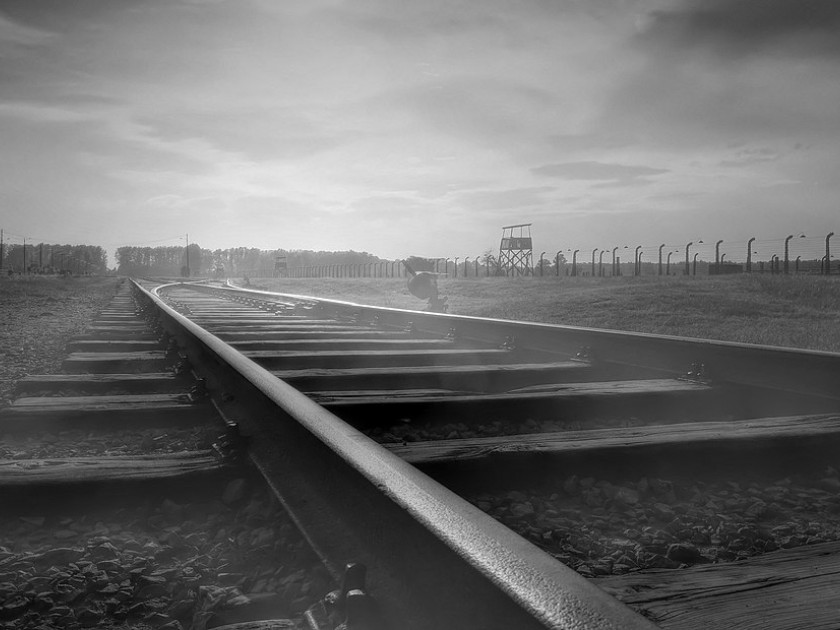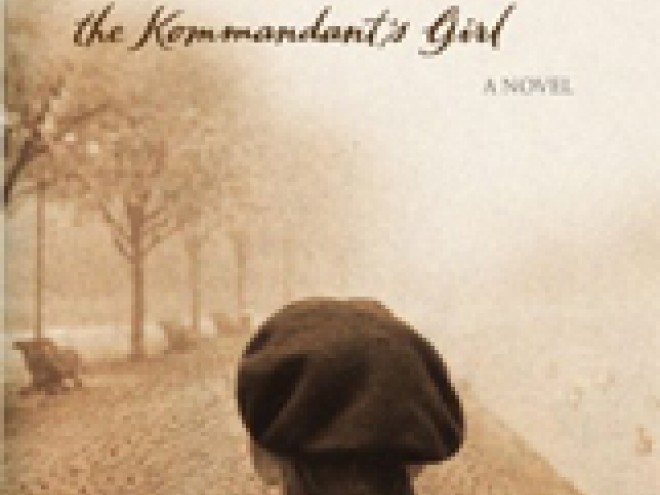
Train tracks to Auschwitz-Birkenau
Photo by Gianfranco Albergo
Readers familiar with my previous books may know that my interest in stories set during the Second World War comes from the years I spent living in Poland among Holocaust survivors, working on issues related to that era. However, some may be surprised to learn that I do not write about the survivors I met, nor about the stories they shared. While I derive inspiration from these stories, they simply aren’t mine to write.
I’m often asked how I find ideas for my books. The short answer is that I go looking for them. But then the question becomes, how do I know when I have found it?
It comes down to something I call The Gasp. If I find a bit of history that is so untold and original that it causes me to gasp after a quarter century of working with the war, I’m hopeful that readers will react the same way.
In the case of Code Name Sapphire, The Gasp happened when I learned the true story of the mission to liberate prisoners from a train headed for Auschwitz. I was stunned — and I had so many questions. On the one hand, I wondered: how could people be so brave as to undertake such an unthinkable and dangerous attempt? But on the other hand, I wanted to know why more people had not tried to do the same thing for the countless victims that were being transported across Europe to the concentration camps. I decided that I wanted to write a novel about both the saboteurs and the people they sought to rescue.
I began by researching the actual train that was liberated. One of my best resources was The Twentieth Train: The True Story of The Ambush of the Death Train to Auschwitz by Marion Schreiber. It taught me about the actual rescuers, three men (a Jewish doctor and his two non-Jewish friends) from the Jewish Defense Committee who undertook the rescue largely on their own. (Support for the mission had always been tenuous, as some resistance leaders worried that the rescue would impede their principal goal of fighting the Germans. Their support further waned when the Germans switched from third-class rail cars to cattle cars, which the resistance feared would render the already treacherous liberation impossible.) I also discovered how the rescuers worked with prisoners inside the camp, providing them with tools to aid in their escape and money for after they were freed.
So many stories of women have been lost to a history that ignored them; who’s to say what women might have done behind the scenes?
In researching, I found out that, tragically, the liberation was of mixed success: some prisoners made it off the train, but others were recaptured or died trying to escape. The three rescuers were arrested and imprisoned; one was executed. Nevertheless, the mission was important, and it undoubtedly gave countless others the hope they needed to escape or simply survive.
The main characters in Code Name Sapphire—Lily, Nik, and their son, Georgi — are a fictional family. But I wanted them to embody the spirit of the real prisoners, parents and children, medical professionals, and intellectuals who lived during the war. Although the three principal rescuers were in fact men, I decided in my story to make one of them, Hannah, a Jewish woman, working in collaboration with other arms of the Belgian resistance. So many stories of women have been lost to a history that ignored them; who’s to say what women might have done behind the scenes? I also sought, through the character of Sofia, to recognize the plight of the Roma community during the Holocaust, which so often goes unnoticed.
I chose to interweave the story of the train rescue with another remarkable aspect of the war: the escape lines throughout Belgium, Holland, and France, and the heroes and heroines who bravely spirited Allied airmen out of Europe. My rendering was principally inspired by The Comet Line, a Belgian network that relied on the assistance of approximately three thousand civilians to help approximately 775 Allied airmen escape Occupied Europe. Some estimate that as many as seventy percent of those working with The Comet Line were women, many of whom sacrificed their lives in the process. Excellent accounts of these real-life escape routes and the selfless people who ran them can be found in The Freedom Line: The Brave Men and Women Who Rescued Allied Airmen from the Nazis During World War II by Peter Eisener and Little Cyclone by Airey Neave.
I also learned much about the Jews of Belgium, both about those who already held citizenship and those who had immigrated from other countries. Through my research, I bore astonished witness to their journey from the earliest days of occupation, to their internment and brutal treatment in camps such as Breendonk and Mechelen, to, in many cases, their ultimate deportation. If you would like to learn more about this history, I recommend The Prisoners Of Breendonk: Personal Histories from a World War II Concentration Camp by James M. Deem.
Code Name Sapphire is my twelfth book. My commitment to illuminating important pieces of history through storytelling is stronger than ever. I consider my books to be, first and foremost, love songs to the people who lived in those most extraordinary times. I hope that readers will be as moved as I have been — and that they will long remember both the characters who inhabit my story and the real people who inspired them.


